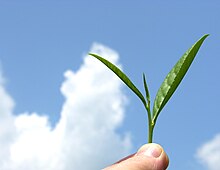In China, people serve tea methodically according to tradition. Gongfu cha is the skill of serving tea (gongfu or "kung fu" means "skill"). In general application in China, tea serving is part of several aspects of the culture.
These information is from: http://green-tea-information.org/
GREEN TEA SERVING TIPS
- Use pure, whole tea.
- Some of the more serious tea companies provide test documentation to show it is free of pesticide residue. If you find a tea you like enough to drink daily, you may want to have it tested; metal toxins and fluoride have a cumulative, deleterious effect on the human body.
- Powdered teabags should be avoided because they tend to be stale, low-quality teas.
- With tea, the fresher the better.
- Use pure water. Never drink fluoridated water; there is no evidence that ingesting fluoride has any health benefits, but high levels are toxic and can even be immediately lethal.
- Avoid boiling hot water. Drinking scalding liquid isn't good for the body, and steeping tea too hot may cause it to lose its health properties.
- Use whole tea. Do not use powdered tea bags.
- Chinese steeping cups might be the easiest--a porcelain cup with a lid and a porcelain basket inside that you remove after steeping.
- French coffee presses also work well, and many great teapots are available online.
- Use pure water. Tap water contains chlorine and minerals which can drastically affect the taste of the tea.
- Infuse the tea with warm water, not boiling.
- Green and white tea should be in the 160-180 degree range.
- To steep the tea: put the tea in the steeping basket; put the tea in the cup or pot and add water; remove the basket and enjoy. Repeat.
Brewing and serving
Steeping is the process of making a cup of tea; it is also referred to as brewing. In general, two grams of tea per 100ml of water, or about one teaspoon of green tea per five ounce cup, should be used. With very high-quality teas like gyokuro, more than this amount of leaf is used, and the leaf is steeped multiple times for short durations.
Green tea steeping time and temperature varies with different tea. The hottest steeping temperatures are 81°C to 87°C (180°F to 190°F) water and the longest steeping times two to three minutes. The coolest brewing temperatures are 61°C to 69°C (140°F to 160°F) and the shortest times about 30 seconds.
In general, lower-quality green teas are steeped hotter and longer, while higher-quality teas are steeped cooler and shorter.
Steeping green tea too hot or too long will result in a bitter, astringent brew, regardless of the initial quality. It is thought that excessively hot water results in tannin chemical release, which is especially problematic in green teas, as they have higher contents of these. High-quality green teas can be and usually are steeped multiple times; two or three steepings is typical.
The steeping technique also plays a very important role in avoiding the tea developing an overcooked taste. The container in which the tea is steeped or teapot should also be warmed beforehand so that the tea does not immediately cool down. It is common practice for tea leaf to be left in the cup or pot and for hot water to be added as the tea is drunk until the flavor degrades.



